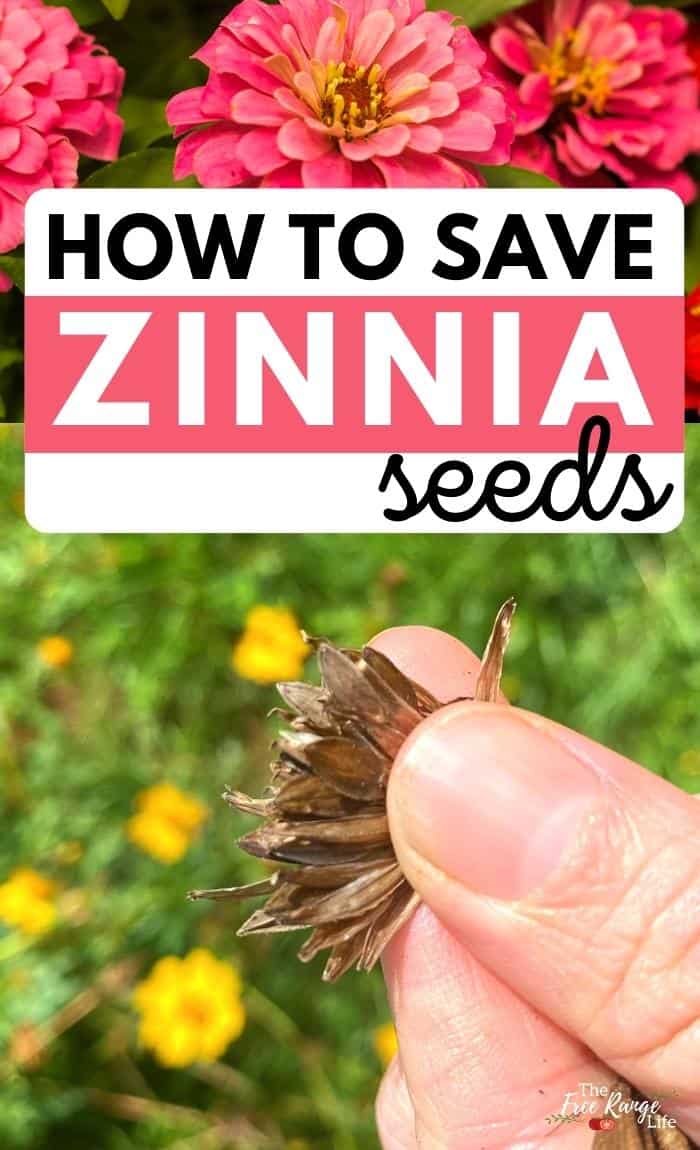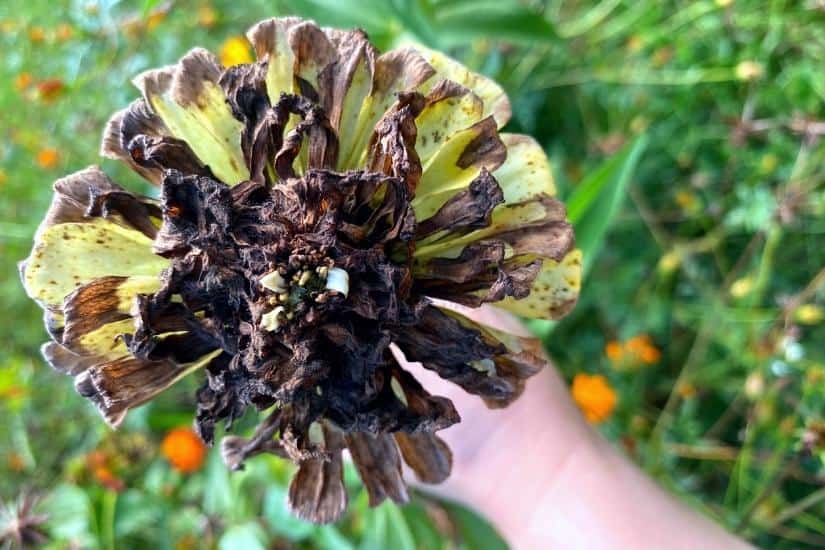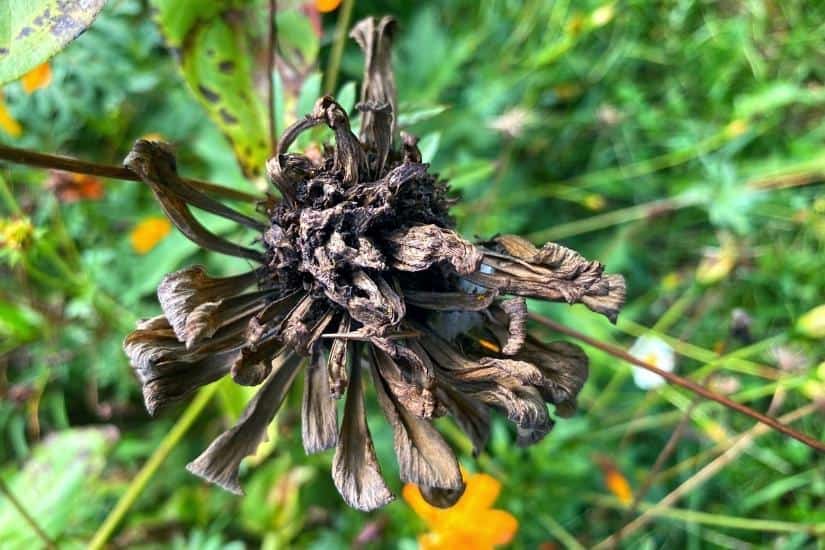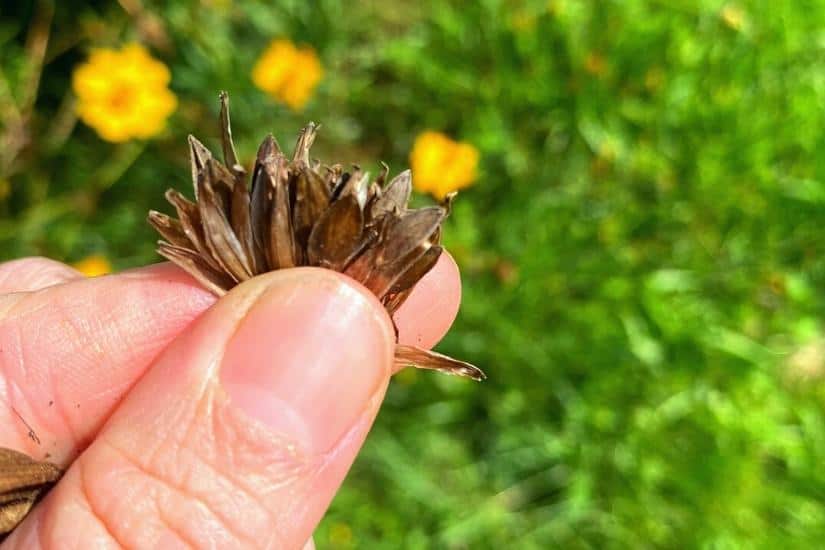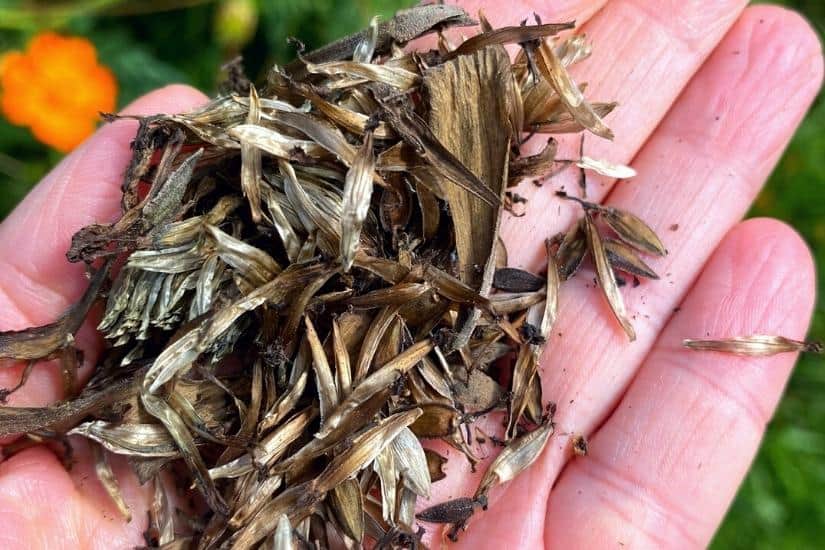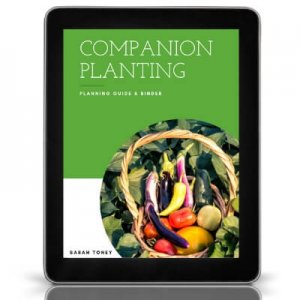Do you love planting zinnias in your flower garden every year? Learn how to save zinnia seeds so you can plant more every year!
Zinnias are one of my favorite flowers. They are perfect in a wildflower mix or to plant in a field or around a mailbox or birdhouse.
This site contains affiliate links. If you make a purchase using one of these links, I may earn a commission. Please see my disclosure page for more information about cookies collected and our privacy policy.
They also make a great companion plant in the vegetable garden because they help bring in beneficial insects and pollinators and are great for bringing more butterflies and hummingbirds to your yard.
Zinnias come in all sorts of colors and varieties- from solid color to candy cane and from tiny to giant in size.
These beautiful flowers can grown anywhere from 6 inches (dwarf types) to 4 feet tall!
Though zinnias are an annual flower, they go to seed very readily. While you can allow the seeds to drop and see if new ones will sprout the following spring, you can also save zinnia seeds to save and plant the following year.
Learning how to save zinnia seeds will save you money- you’ll never have to buy flower seeds again! And you’ll get to plant so many more!
How to Save Zinnia Seeds for Later
Collecting and saving zinnia seeds is very easy and in just a couple of minutes you can have tons of seeds. Which will turn in to tons of flowers you can plant next year for free!
Here’s how to do it:
With many of the flowers I grow, such as calendula or cosmos, and of course, zinnias, I pick the blossoms as they grow or deadhead them after the blooms have faded. But when you are ready to collect seeds you will need to leave the flowers alone and allow them to dry and form the seed head.
The zinnia seeds will form on the flower head after the petals have dropped.
At first it will look like this:
The above is an immature seed head. They are not ready for picking yet and are still quite green.
You want to wait until the flower head is completely brown and dry.
It will look like this when the zinnia seeds are ready to be collected:
When the seeds are fully mature they come off very easily. Simply snip off the dried flower heads whole.
Collect all the dry heads that you can find- but watch out for spiders! They love to live on the flower and seed heads!
Once you’ve collected all the dried flowers, it’s time to pull out the seeds.
All you need to do is gently pull on the dried petals and the seeds will come out. Some will be attached to the petals still, that’s okay.
Pull all of the seeds out and place them in a container.
Before storing it’s very important that the seeds are completely dry.
If you aren’t certain the seeds are 100% dry you can keep them in an open container for a few days to allow them to dry before storing them.
How to Store Saved Zinnia Seeds
Make sure the zinnia seeds are completely dry before storing, otherwise you might end up with mold in your jar which can ruin your entire seed collection!
It’s best to keep your dried zinnia seeds in an air tight container with an air tight lid. This prevents the seeds from collecting moisture from the air around them.
Mason jars are perfect for storing seeds!
Another option is to seal the dry seeds in a plastic Ziploc bag or a sealed envelope.
No matter which container you choose, be sure to label your container with the name of the seed and the year collected.
Seeds are best stored at a temperature of 30-40 degrees, so storing them in the refrigerator or freezer can work well to keep them dry and mold free, thus expanding their shelf life. You can also just store them where ever you store the rest of your garden seed collection!
If you don’t want to collect them, you can always leave the seeds on your zinnia and see if they will self seed the following spring. I usually do a little bit of both!
You may also like:

